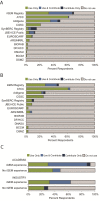A survey of enabling technologies in synthetic biology
- PMID: 23663447
- PMCID: PMC3684516
- DOI: 10.1186/1754-1611-7-13
A survey of enabling technologies in synthetic biology
Abstract
Background: Realizing constructive applications of synthetic biology requires continued development of enabling technologies as well as policies and practices to ensure these technologies remain accessible for research. Broadly defined, enabling technologies for synthetic biology include any reagent or method that, alone or in combination with associated technologies, provides the means to generate any new research tool or application. Because applications of synthetic biology likely will embody multiple patented inventions, it will be important to create structures for managing intellectual property rights that best promote continued innovation. Monitoring the enabling technologies of synthetic biology will facilitate the systematic investigation of property rights coupled to these technologies and help shape policies and practices that impact the use, regulation, patenting, and licensing of these technologies.
Results: We conducted a survey among a self-identifying community of practitioners engaged in synthetic biology research to obtain their opinions and experiences with technologies that support the engineering of biological systems. Technologies widely used and considered enabling by survey participants included public and private registries of biological parts, standard methods for physical assembly of DNA constructs, genomic databases, software tools for search, alignment, analysis, and editing of DNA sequences, and commercial services for DNA synthesis and sequencing. Standards and methods supporting measurement, functional composition, and data exchange were less widely used though still considered enabling by a subset of survey participants.
Conclusions: The set of enabling technologies compiled from this survey provide insight into the many and varied technologies that support innovation in synthetic biology. Many of these technologies are widely accessible for use, either by virtue of being in the public domain or through legal tools such as non-exclusive licensing. Access to some patent protected technologies is less clear and use of these technologies may be subject to restrictions imposed by material transfer agreements or other contract terms. We expect the technologies considered enabling for synthetic biology to change as the field advances. By monitoring the enabling technologies of synthetic biology and addressing the policies and practices that impact their development and use, our hope is that the field will be better able to realize its full potential.
Figures






References
-
- Ro DK, Paradise EM, Ouellet M, Fisher KJ, Newman KL. et al.Production of the antimalarial drug precursor artemisinic acid in engineered yeast. Nature. 2006;440:940–943. - PubMed
-
- Georgianna DR, Mayfield SP. Exploiting diversity and synthetic biology for the production of algal biofuels. Nature. 2012;488:329–335. - PubMed
LinkOut - more resources
Full Text Sources
Other Literature Sources
Molecular Biology Databases
Research Materials

